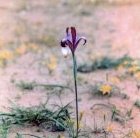 |
QUICK SEARCH
MO PROJECTS:
Africa
Asia/Pacific
Mesoamerica
North America
South America
General Taxonomy
Photo Essays
Training in Latin
America
MO RESEARCH:
Wm. L. Brown Center
Bryology
GIS
Graduate Studies
Research Experiences
for Undergraduates
Imaging Lab
Library
MBG Press
Publications
Climate Change
Catalog Fossil Plants
MO DATABASES:
W³MOST
Image Index
Rare Books
Angiosperm
Phylogeny
Res Botanica
All Databases
INFORMATION:
What's New?
People at MO
Visitor's Guide
Herbarium
Jobs & Fellowships
Symposium
Research Links
Site Map
Search
ORNAMENTAL PLANTS IN THEIR NATURAL HABITATSE. Uzbekistan
Forest, subalpine and alpine vegetation can be seen also in Central Asian nature reserves such as the Aksu-Dzabagly (Kazakstan), Hissarskiy (Tadjikistan), Zaamin-Guralash (Uzbekistan) and Almaatinskiy (Kazakstan). The first is located on the Aksu river in the Chimkent Region, whereas the Almaatinskiy reserve is very close to Almaty, and can be reached within one day. Forests also occur in the Sary Chelek reserve of the Namangan Region (Uzbekistan) and in the Chatkalskiy reserve of the Tashkent Region (Uzbekistan). However, shrub thickets dominate the Issyk Kul’ reserve (Kyrgyzstan). The "Tiger Ravine" reserve in the Pyanczh Region (Tajikistan) includes forests, meadows and deserts and also special forest and scrub complex at the bottom of river valleys, "tugai," in Russian. The Badkhyz and Repetek reserves (Turkmenistan) include semideserts interspersed with Pistacia woodlands and more typical desert vegetation. Badkhyz is actually the southernmost point in the FSU. |
|||||
| ORNAMENTAL PLANTS FROM RUSSIA |
© 1995-2025 Missouri Botanical Garden, All Rights Reserved
4344 Shaw Blvd.
St. Louis, MO 63110
(314) 577-5100
Technical Support




